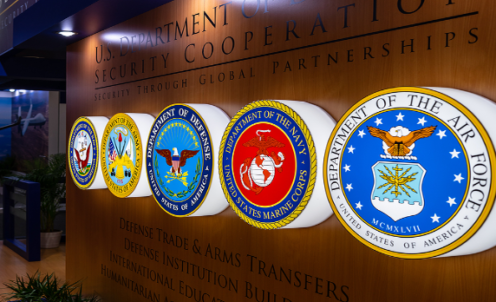5G is now in wide use across consumer cellular networks, providing faster connectivity and downloads. Government organizations are looking to take advantage of the speed and capabilities of 5G to power smart city initiatives, support the digitization of field work, support first responders, and better track assets. A recent study found that 90 percent of Federal agencies plan to adopt 5G technology into their infrastructure to support mission imperatives, but these implementations are not without challenges.
As with any new technology, the budget cycle of the Federal Government makes it difficult to become early adopters. Over 90% of the respondents agreed cost and budget were the main concern. Coming in a close second, security presented the next major concern with 87% looking at risks introduced by the increased attack surface that results from so much mobile data transmission.
Securing 5G
5G networks provided by telecommunication companies have security built in, but it sometimes is not enough for, or compatible with, government (particularly Defense Department) needs. To guarantee the security of the networks and the data that flows over them, the National Security Agency (NSA) is exploring the idea of “network slicing” where service providers set up independent logical networks across 5G infrastructure, specifically for defense organizations.
The move to zero trust (ZT) may also provide a solution to 5G security challenges. Right now, there are many individual guidelines, but no agreed upon standards-based framework. As ZT practices get implemented, standards will need to emerge to ensure interoperability of systems, providing a common structure for security and connectivity.
The Federal Communications Commission (FCC) is setting the stage for the formalization of standards by initiating actions that include:
- Improving coordination with other agencies on critical infrastructure security
- Restricting the ability of foreign firms to operate in the U.S. due to national security concerns
- Launching a program for U.S. telecom providers to remove and replace foreign-produced network gear and supporting the development of open radio access networks to replace those systems
- Imposing new cybersecurity requirements on participants in the Emergency Alert System
The Cybersecurity Infrastructure and Security Agency (CISA) is also stepping in with guidance to address both security and procurement. CISA’s five step evaluation process aims to give agencies a blueprint on how to navigate the risk management process as they authorize 5G systems. It provides a uniform and flexible approach for agencies to evaluate, understand, and address security and resilience assessment gaps.
Implementing 5G
Assuming security risks can be mitigated, there are still challenges to implementing 5G. The time it takes to vet solutions for security could mean that the base technology is stale before it is ever built into processes. Department of Defense (DoD) innovation officers are pushing the government to look at “time to market” as a driving force for approving the use and purchase of 5G.
To help build confidence in 5G, the DoD has established a 5G and FutureG cross-functional team that will carry out the DoD’s responsibilities for policy, guidance, research and development, and acquisition. Their work includes strengthening relationships with telecommunications carriers to ensure interoperability. Efforts to accelerate 5G adoption also include a competition, the “2023 5G Challenge: Advanced Interoperability,” which will help establish the deployment readiness of open radio access network (Open RAN) systems that are critical to future decisions about updating communications infrastructure on DoD facilities.
5G Powering the Future
Where procurement and security issues are addressed, 5G is already proving to have meaningful results, particularly for DoD organizations, in the areas of realistic training, smart warehouses, facility safety, and telemedicine.
While 5G challenges are being addressed, the DoD is looking ahead to prepare for 6G by helping to fund a new technology hub, Open6G, to promote the next generation of high-tech network capabilities.
To keep up with the challenges and the successes of 5G, check out these resources on GovWhitePapers and GovEvents:
- Secure 5G: Transforming the Data Sharing Landscape (white paper) – With higher speeds, superior reliability, and endpoint-to-endpoint device connectivity, 5G has the potential to transform how the Government operates in the future. Learn what Government experts shared about agencies moving 5G systems beyond prototyping in the coming years, and related needs to evaluate security and risks throughout the increasingly complex ecosystem of end-user equipment, radio access networks, 5G core networks, and edge computing systems.
- ESF Potential Threats to 5G Network Slicing (white paper) – This paper introduces 5G stakeholders to the benefits associated with network slicing and introduces perceived risks and management strategies that may address those risks.
- Evolving Operational Security Assurance for 5G and Beyond (white paper) – This white paper investigates the main challenges related to the security compliance in network function virtualization for 5G and beyond.
- Open Radio Access Network Security Considerations (white paper) – This paper assesses the benefits and security considerations with implementing Open RAN architecture. It is focused on security considerations for several key technical aspects of Open RAN.
- Coexisting or Clashing: 5G with Radar/Satellite (April 13, 2023; webcast) – With new bands specified for 5G communications systems, there is now an issue of coexistence. This presentation will discuss new digital twin technologies that can be used for planning and simulation purposes of coexistence effects as well as the use of lab prototyping to predict the impact of coexistence among other possibilities for mitigating coexistence effects.
- 5G Forum (April 25, 2023; Falls Church, VA) – Hear from government officials, 5G experts, and industry leaders as they discuss the challenges, opportunities, and priorities surrounding 5G, as well as what’s next for the future of networks with the constant emergence of new technologies and capabilities.
Check out GovWhitePapers and GovEvents for more insight into the future of 5G in government.















